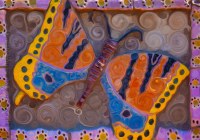Making money online isn’t as simple as many think even though there are lots of ways one might do it, such as playing games, mining bitcoins, creating a YouTube channel, or just creating a blog. But the Internet allows much more than these methods, and that is to make money out of your hobbies. Computer builders can advertise their skills and make client builds, graphics specialists can make custom designs and sell them and the list goes on and on.
One hobby is quite common and and the possibility for getting fair compensation is quite high: photography. Be it digital photo manipulation or old school photography, those who have this hobby can sell their photos and make a pretty buck from it. Of course, your photos must be good if you want to sell them.
What types of photos can you sell?

Photo credits: Dmitriy Aseev
Pretty much any type of digital media can be sold. If you own a quality camera, like a DSLR, you can take artistic photos or stock photos. There is a big market for stock photography, as digital artists use these photos to create others from them. Also, in the same category of stock photography are texture photographs, which can also be done with a high quality camera.
Note: Stock photography requires you to have a DSLR camera, as you need the high resolution provided by these devices. This is especially true for texture photography, where the textures need to be high resolution and high quality.
Artistic photography can also bring you some money, but there are many photographers out there that are very well known and take stunning pictures of all types (portraits, landscapes, nature, sports, macro, etc), and making a name for yourself is pretty hard, but if you are talented, then you will succeed.
Digital compositions can be sold in numerous places and graphics designers have made a living out of creating awesome photos from scratch or from stocks, using specialized software, such as Adobe Photoshop. If you don’t own a powerful camera, and you don’t like going out and searching for the best frame, then this might be the one for you. But keep in mind that programs like Photoshop are very hard to learn, and becoming proficient with them will take months if not years of hard work.
Selling photos online: Q&A

Photo credits: dphotojournal
If you are just now starting to think about selling your photos, then you must have lots of questions. Here are a few answers that might interest you in the beginning:
Q: How much money can I make from selling photos?
A: It greatly depends on how well your photos are discovered, how many you sell and what percentage of the cost of the photos you receive from the service you use.
Q: How long before I get any payment?
A: Again, it depends on how quickly your photos are discovered, how good they are, how affordable they are and of course, on what people need.
Q: Do I have to invest anything?
A: In some cases, yes. There are many websites that allow you to upload photos for free, or try a demo of their services, but many require either a one time buy or a regular subscription.
Q: What is the best solution for selling photos online?
A: Both ways have their advantages, what it boils down to is the time you plan on investing in this and of course, the budget.
Tips on selling your pictures online
Even though the concept of selling pictures online is pretty straightforward, there are some aspects that you should consider. By following these simple guidelines you will get a head start in your endeavor and make a name for yourself. After all, being known by people is half of the way, and once you make yourself known to the customers, you will have better chances of selling your photos.
Before you start selling your pictures online, you might want to do a little reading on photography and composition, as you will need these skills to later take good pictures. Also, if you are using Adobe Photoshop to compose or edit photos, then look at a few tutorials and learn how to use it.
- Finding your niche is a good way to start. Everyone likes different things, therefore, they will do better at taking pictures or composing on different themes. Experiment with a number of models and see which pleases you the best. For some, macro photography is best looking, and for others, it might be astrophotography.
- Get your gear ready, be it your DSLR camera or your editing software. Now that you learned a bit about them, you will know what you need to make the best pictures, and if you discovered your niche, then you will need specialized tools and equipment.
- Don’t discard photos even if you don’t particularly like them. Beauty lies in the eyes of the beholder, therefore someone might like a photo that you find mediocre, or they might hate what you think of as your masterpiece.
- Keep your photos organized! You might not upload all your photos at once to a website to sell them, so keep them handy for later on. Also, you might have more than one niche, and so, you will have to organize them for better access. If you are doing stock photography and other types of photography at the same time, you will have to sell them on different websites and having them organized will help you a lot.
- Make yourself a portfolio and show customers what you can do. This is especially necessary if you plan on creating a Print on Demand shop.
- Scout all the websites that sell photographs and upload your work. The more sources you use, the more likely it is your photos will be found and bought.
- Don’t get discouraged if your photos are rejected for whatever reason by some websites, just keep trying in other places and you’ll get there.
- If by any chance some of your photos are rejected everywhere, do the next best thing: offer them for free download, under your name and watermark. This will make you known to the customer base and you might end up with some fans who will buy your other photos.
- Do some advanced research on selling photos online. There are a number of books that might help you achieve your goal. Here are a few of them: 99 Ways To Make Money From Your Photos, Sell & Re-Sell Your Photos, Photographing Arts – Crafts & Collectibles, Sell Photos Online.
Where to sell pictures online?

Photo credits: Familysearch
There are two ways to go about selling your pictures online. First off there are websites that allow you to open an account and upload your photos to your gallery. These websites are used by thousands of photographers and customers and offer a simple and effective way to sell photos online.
The other type of websites or services that you can use to sell your photos online is the online portfolio builder, where you use the dedicated tools to create your own website and have your own gallery. This allows users to better customize their pages and have nice looking websites that reflect the type of pictures they want to sell.
Websites to upload and sell your pictures
There are a number of websites where you can sell pictures but keep in mind that you can only sell pictures that belong to you. If you have some awesome pictures that you have taken, these websites will be of help if you wish to sell them and make a profit out of your hobby. This type of websites has some advantages that make them suited for certain users:
- They are easy to set up
- They allow almost any types of photos (computer generated pictures or traditional photography)
- Free to use
- Some don’t require users to minimum size for the picture
Although these websites are simple and free to use, keep in mind that they hold hundreds of thousands of images, and getting yours sold might take a while. Now that you know what these websites can do for you and how to use them, here are some examples of good markets where you can bring your photos to sell them:
Websites to create online personal portfolios

Photo Credits: joeyl
Keep in mind that not only digital copies of your images can be sold. If you have some great shots and some basic Photoshop skills, you can make your own Print on Demand website and sell your photos as greeting cards or paintings. Also, there are a number of services that will allow you to create a portfolio and upload your photos to a hosting server. From these websites, you will be able to sell your photos easily to customers. Here are some of the highlights of these services:
- Some offer WordPress support for creating blogs with good SEO
- Highly customizable
- Your portfolio only holds your photos
- Professional look
- Some of these websites will verify your photos and automatically add them to their existing database
While these services allow anyone to create a professional portfolio, most of them are not free, and sooner or later, users will have to pay a subscription. Also, they will have to do some research on how to run a blog and make it popular if they want their pictures to show up in web searches. If you are interested in such solutions, here are a few to get you started:
These are only a few of the tools that you will use in your pursuit to sell your pictures, as there are many other tools out there that might help you. Remember to do solid research before you commit to a service or a website and try to use well known services that others have used and recommended.


 September 27, 2013
September 27, 2013 





















